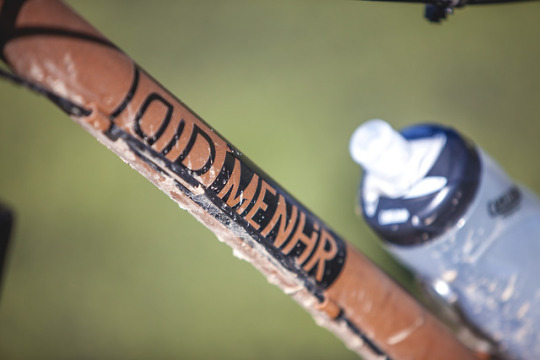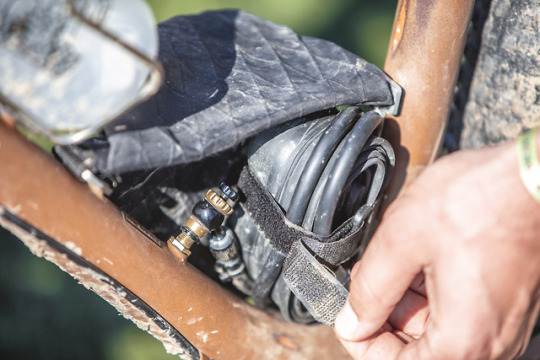#menhir cycles
Text
Nibelungensage (& Adjacent) Music Masterpost
Or, what happens when you already have a full (if loosely-based) opera cycle to listen to and, in the great tradition of objectively-flawed-but-still-iconic animated classics from your childhood, still ask, "Thank you. But what else?"
Part 1 of Hopefully At Least More Than One to come. Genres range from rock/metal to folk to techno to Stuff I Wouldn't Really Know How To Classify. Can't guarantee all of the songs listed here will be to your taste (after all, not all of them are to my taste, either) but some are, imho, real bangers.
Nibelungenlied (full album) - German Oak
The Song of the Nibelungs (full album) - Wotan
Die Nibelungen (full album) - Årabrot
Drachenblut - (full album) Mystic Circle
Hôrt mîn Sagen (full album) - Angur
Wigant (full album) - Stainless Steel
Nibelung (full album) - Siegfried
Balmung - Siegfried
Rheingold - Siegfried
Siegfried - Siegfried
Drachenherz - Siegfried
Die Treuewacht - Siegfried
Am Isenstein - Siegfried
Hagen Von Tronje - Siegfried
Hagen the Cruel - White Skull
Kriemhild Story - White Skull
The Killing Queen - White Skull
The Terrible Slaughter - White Skull
Etzel - White Skull
Attle and Bleda - White Skull
Sigurdlied - Faun
Brynhilds Lied - Faun
Brynhildur Táttur - Faun
Dragon - Corpsepain
Hagen Von Tronje - Corpsepain
Nibelungenlied - Wergeld
Der Ring des Nibelungen - E Nomine
Nibelungen - Nico
Siegfrieds Song - Julian Lehmann
SGFRD Dragonslayer - Feuerschwanz
Brunhild - Saltatio Mortis
Brunhilda - Dziewanna
Hagen Von Tronje - Saxorior
Das Hildebrandslied Teil 1 - Menhir
Das Hildebrandslied Teil 2 - Menhir
Hildebrandslied - Transit
#das nibelungenlied#nibelungenlied#the nibelungenlied#die nibelungen#volsunga saga#saga of the volsungs#volsungar#norse mythology#der ring des nibelungen#the ring of the nibelung#ring cycle#hildebrandslied#helden sage
4 notes
·
View notes
Text
Megalithic Constructions

In the final phase of the Neolithic and the subsequent Eneolithic period, a remarkable development of megalithic constructions emerged, a term derived from the Greek ("mégas" for large and "lithòs" for stone). These imposing structures, largely dedicated to worship and collective burials, bear witness to the ingenuity and spirituality of ancient civilizations.
Menhir: Towering Monuments of Symbolic Meaning
Menhirs, derived from Breton ("men" for stone and "hir" for long), are tall monoliths driven into the ground, often marking burial sites. Their height, ranging from 2-3 meters to 6 meters, can reach extraordinary peaks, as highlighted by the Breton menhirs of Kerloas and Locmariaquer. These monoliths can be isolated or arranged in straight or circular alignments, often oriented in precise astronomical directions. In Carnac, Brittany, a complex of about 3000 menhirs extends in parallel rows, oriented westward, creating a captivating panorama over a kilometer long.
Dolmen: Innovative Trilithic System in Funerary Architecture
The dolmen, derived from Breton ("doul" or "tol" for table and "men" for stone), constitutes a form of funerary architecture. Composed of two or more stone blocks driven into the ground, surmounted by a horizontal slab, this trilithic construction system represents mankind's first use in this regard. The dolmen, primarily sepulchral, can be an individual or collective tomb, often characterized by an access corridor. Initially covered by stone or earth tumuli, the oldest dolmens in Italy are found in Sardinia, Apulia, and the Alpine region for the Copper Age.
Cromlech: Concentric Monuments of Astronomical Significance
Cromlechs, derived from Breton ("crom" for round and "lech" for stone), represent the monumental application of the trilithic system. These consist of series of dolmens arranged in concentric circular figures. Widespread in Neolithic and Eneolithic Europe, cromlechs originally served to define the lunar cycle, later adapting to indicate the movement of the Sun and the progression of seasons. In addition to their practical utility, these sites were spaces for collective ceremonies, including funeral, agricultural, and fertility rites.
Allée Couverte: Collective Funerary Constructions in France
Another application of the dolmen, particularly common in France, is the Allée couverte ("covered alley"). These collective funerary constructions are composed of stone slabs supported by vertical structures or dry-stone walls, sometimes reaching considerable dimensions. A notable example is the Allée couverte du Mougau, erected between the end of the Neolithic and the beginning of the Eneolithic, which stands out for the presence of engravings. The structure, 14 meters long, has a north-south orientation, with a northern entrance and a chamber at the southern end, likely preceded by a vestibule.
In Conclusion
Megalithic constructions bear witness to the rich cultural and religious landscape of ancient civilizations, offering a detailed look into how these communities conceived the world and the divine.
#MegalithicWonders#AncientArchitecture#SpiritualHeritage#NeolithicCultures#HistoricalMonuments#ArchaeologicalMarvels#CulturalSignificance#AncientCivilizations#CeremonialSites#HistoricalSpirituality#StoneAgeWonders#EneolithicHeritage#CulturalExploration#NeolithicArtifacts#ArchitecturalInnovation#CulturalHeritage#AncientWisdom#HistoricalDiscovery#SacredSites#AncientBeliefs
0 notes
Text
Au mois de mars, gare aux comparses !

Les Gaulois inventés par le tandem Goscinny-Uderzo se faisaient des Romains une idée sans doute caricaturale, si l’on admet que toute caricature réussie est basée sur un fond de vérité poussé à la démesure. Ainsi quand Obélix s’exclame : « Ils sont fous ces Romains ! », il ne fait qu’accentuer l’écart culturel entre les autochtones – avec leurs bardes, druides, livreurs de menhirs, voire leur potion magique –, et ces légionnaires latins venus occuper leurs contrées. C’est même la charge du trait qui fait alors sourire ou s’esclaffer.
N’empêche que la différence ainsi brocardée repose sur quelques données historiques fiables qui dépassent l’anachronisme évident des Astérix. Par exemple le calendrier. Les Romains antiques découpaient l’année en dix mois, dont mars était le premier. Ce Nouvel An, pour nous en retard de deux mois, n’était pas l’occasion d’étrennes, mais le début des campagnes au double sens du terme : campagnes où on relançait les travaux agricoles du primum tempus, du printemps, et campagnes militaires, toutes deux mises en veilleuse pendant la morte saison. Or à quelle divinité était voué ce premier mois ? À Mars, dieu de la guerre, dont le nom avait servi aussi à baptiser la planète rouge et un jour de la semaine, le mardi. En effet, parmi les domaines où ces Romains excellaient, il y avait, outre la construction et la législation, la conquête militaire. De cet exercice sous le patronage de Mars, le français moderne a d’ailleurs hérité tout ce qui est appelé martial : les arts, la cour, le discours, la loi, voire l’expédition. C’est même celle-ci qui fut à l’origine de la Guerre des Gaules et de la présence dans nos contrées de celui qui, selon ses propres termes, « vint, vit et vainquit », j’ai nommé Jules César.
Or ce général, auquel Uderzo prête un indéniable facies romain – avec sa légendaire calvitie cachée par la couronne de lauriers –, ne vint pas seulement faire des siennes chez nous. Il réforma aussi le calendrier républicain, qui ne comptait à l’origine que 304 jours (dix mois alternés de 29 ou 31 jours, de Martius à December), auxquels une réforme antérieure avait déjà ajouté l’équivalent de deux mois flottants. Ceux-ci étaient laissés à la discrétion du grand pontife, qui devait tenir compte des jours fastes et néfastes, des fêtes religieuses et des dates mémorables de l’histoire de Rome. Ce qui causa moult décisions aléatoires ou approximatives et créa surtout un déphasage inquiétant sur l’année tropique. À l’époque où Jules accéda aux affaires, l’année comptait 355 jours en douze mois et se terminait par les quatre semaines de février. Sur proposition de son astronome Sosigène, il décida de mettre fin à « la grande confusion » en portant le cycle annuel à 365 jours, soit dix jours de plus. Et comme l’année antique expirait un 28 février, on convint d’y ajouter tous les quatre ans un vingt-neuvième jour par combler le retard sur le soleil. La décision devint effective en 45 avant notre ère, étant entendu que l’année débuterait désormais en janvier et non en mars.
Si on croyait encore aux augures ou aux diseuses de mauvaises aventures, on pourrait conclure qu’en l’occurrence le dieu Mars se vengea de cette relégation au troisième rang. Certes il avait béni les entreprises martiales de Jules, en particulier sa conquête de la Gaule, ses expéditions africaines et sa victoire dans la guerre civile de Rome. Mais le complot qui se tramait contre lui et qui se solderait par son assassinat, tomberait aussi en mars, plus précisément le 15 mars de l’an 44 avant notre ère. Autrement dit, si Jules n’avait pas réformé le calendrier, la date de sa mort violente eût été un jour quelconque des calendes, des ides ou des nones d’un autre mois. Peut-être même d’un mois flottant ou intercalé. Mars avait donc abandonné son martial général au milieu du mois qui lui était consacré, le mois de mars. Par Toutatis, ceci ne pouvait être pure coïncidence !
Jules ne perdit pourtant pas tout dans cette histoire. Car non seulement on l’avait déjà appelé César – nom d’origine obscure mais promis à un grand avenir, puisque c’est l’ancêtre de tous les futurs Kaisers et Tsars –, mais le sénat romain, toujours prêt à voler au secours de la victoire, décida de l’honorer en rebaptisant le cinquième mois de l’ancienne année – le Quintilis – en Julius. Ce qui nous donna le mois de juillet. Toutefois il fallut un certain temps pour que ces nouvelles arrivent aux camps romains (dont Babaorum et Petibonum) entourant le célèbre village gaulois. Lequel continua, continue et continuera toujours à résister à l’envahisseur, foi d’Obélix ! Comme le fait d’ailleurs le Parc Astérix près de Paris, où l’on peut notamment s’embarquer sur un grand huit décoiffant, qui porte le nom gaulois de … Goudurix.
0 notes
Text
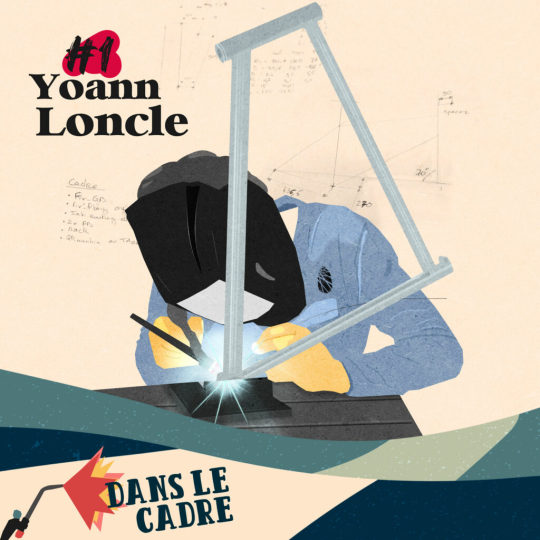
#yoann loncle#menhir cycles#bike#velo#soudure#welding#artisanat#cadreur#artisan#cadre#framebuilders#framebuilding#menhir#Spotify
1 note
·
View note
Text
Farer Climb To Furious New Heights With ‘Monad’
~Doomed & Stoned Debuts~
By Billy Goate

There's something extraordinary happening in the Netherlands in these extraordinary times, something which we took great pains to document in our two-part compilation, 'Doomed & Stoned in the Netherlands' (2020). Even after covering 60+ bands between them, we didn't foresee the coming of the mighty doom-noise trio FARER.
Last month, Tartarus Records and Aesthetic Death released the band's debut LP 'Monad' (2020) on cassette and CD, respectively. I was struck by Neils Verwijk's cover art straightaway, which reminded me of the stark transformation of one man's anger in Tetsuo: The Bullet Man (a 2009 Japanese cyberpunk horror film, based upon a similar premise in 1989's Tetsuo: The Iron Man). In it, the protagonist is provoked again and again, until he sheds his human form and becomes a strange (and very violent) carbon life form -- wrath incarnate.
Though there's no evidence of Farer drawing direct inspiration from Shinya Tsukamoto's viscerally disturbing parable, one can certainly detect an undercurrent of volcanic frustration gurgling just beneath the surface of this lumbering 52-minute behemoth. The shrieks and howls are replete with pain and anguish, reinforced by the slow and steady movement of bass and drums -- two basses, in fact, and not a guitar in sight. The result is deeply atmospheric and emotionally savaging.
Monad by Farer
Today, Doomed & Stoned is pleased to bring you Farer in this remarkable live performance of Monad in its entirety. Shot by VoidManiac with a wonderful supporting crew of filmographers, stage hands, and sound engineers at Vera Club for the International Underground in Groningen, this is your chance to savor Farer in their most honest form: demanding, bleak, and undisguised.
Says the band:
Once it became clear that a true live show wasn't happening anytime soon, we switched gears and decided to capture a live performance. Although nothing beats the real thing, we came close to conveying that unattainable live feel. We wanted it to be honest; no gimmicks. A uniform look and character shines through in all our outings, so expect monochrome long shots and slow transitions. Imagine yourself there with us, hearing the lamenting howls, rumbling of the drums, and abrasive noise of both bass guitars.
Shedding any hint of pretense, Farer lend themselves as a voice for our own angst and, indeed, a release for nearly a dozen months of pent up frustration, uncertainty, and loss. Witnessing the chains rattle on drums and the sweat-drenched crescendos accented by screeching bass strings adds something truly cathartic to the mix. It's the next best thing to being there, so blow it up on the big screen if you can, or at the very least turn the volume up as high as the winter moon and...
...give ear.
Farer - Monad (live)
Some Buzz
Dutch doom/noise trio Farer create an imposing discord of severe, caustic bass textures, harrowing vocals and winding drums. The band, featuring members of Ortega, was originally founded as MENHIR in 2013, but chose Farer as their new moniker mid-2019, after spending two-and-a-half years of writing and recording their debut record 'Monad.' By taking time to further explore the possibilities of being a band with two bass players and the absence of a guitar, the record exhibits the bands evolution into a new entity thoroughly. Meaning, carefully crafted, drawn-out, oppressive and compelling songs.
Traversing the absolute – 'Monad' is a testament to suffering. Heavy grinding riffs and deep pulsating rhythms; a restless stirring. Amidst all these layers we hear the human voice as a primal wordless scream – the shock of being. We feel the dissonance of forces vying for existence and the harmony of lightless oblivion. Whispers of unfathomable truths emerge from the static.
Farer presents a tactile experience of the grim and brutal cycle of creation and destruction. There is desperation and anger, but above all a greater comprehension of the eternal patterns reverberating through flesh. The relentless driving layers of crushed sound offer no respite. In resonance is the movement of great mass. The vocals are brutally honest and raw. Complex and utterly bleak. A confrontation with the void.
Out of nothing, nothing becomes.
Follow The Band
Get Their Music
#D&S Debuts#Farer#The Netherlands#Dutch#doom#doom metal#noise#sludge#Aesthetic Death Records#Tartarus Records#Live 'n' Loud#music video#Void Maniac#Doomed & Stoned
1 note
·
View note
Text
Introduction to Semdaeism
Hello! I am the Semdaen arrikirri which makes me the head and founder of Semdaeism. In the past I have made several smaller introductions to Semdaeism but I feel they were too vague and didn't give a proper understanding of the religion. So I will use this time to make a much fuller and more detailed introduction to the faith while also making sure I answer some of the more asked questions, show how to be a Semdaen and dispel the misunderstandings around my faith.
Firstly, what is Semdaeism? The Semdaen religion is a polytheistic religion that takes an Omnic standpoint on the existence of the gods and believes that all of the gods exist at once, this isn't anything special amongst polytheistic faiths, however Semdaeism itself worships a different pantheon of deities named the 'Kono. The 'Kono are not gods, but rather people who had become godlike by the judgment of a creator deity named Pono, the crow. This is a important doctrine in Semdaeism and often leads to people thinking I am belittling the gods, this is not true as the gods are still considered extremely important, but ultimately subservient to the 'Kono and the king who we will get to later.
Now the 'Kono act a lot like gods, in short terms, due to the gods warring with themselves and with demons it plunged the world into chaos and the king of the gods Dyeus Phter had lost control. Then two creator deities came to the world and segregated the gods and installed the 'kono to police the world and keep it under control. They do eventually lose control and leave Earth for a while to come back later, through me. But that is not important. There are various 'Kono, they come from many backgrounds and areas in the world and have various temperaments and laws. These Laws are often on things such as drinking and eating along with social manners etc. Apart from the actual religious laws of the faith which are concrete, the laws from 'Kono are often varied and change on which 'kono is the Cultic (Patron/Matron) 'Kono. The Punishment for breaking these laws are often dealt with by the 'kono as well. I mentioned that there are Cultic 'Kono, the Semdaen religion has a system similar to the patron and matron gods and goddesses of other Polytheistic faiths. This being you have a wider Cultic 'Kono/s that you worship directly and a personnel 'Kono that acts as a guardian angel figure, this 'kono will act as your protector on day to day life and is separate from other guardian angel figures but works with them. The personnel 'kono was acting as your guardian from your birth and will continue to guard you all of your life. Cultic 'Kono represent themselves various animals and beasts, such as bears, boars etc. In artworks that have religious connotations, made by me, the animals are used to represent various 'Kono who are then used to represent various concepts such as life death, love and war. This is important because in the place of true idols for the 'Kono which show them as how they look you can instead use an animal statue in its place for Worship. The 'kono that are minor govern other many things such as the rocks, hills, trees and mountains. They exist too in the cycle of worship and reverence, especially high ranking minor 'Kono will inhabit various grand structures and as such deserve reverence the most. Therefore we have a system that is very similar to the Kami system in Shintoism.
The Next largest part of Semdaeism is the king, before I became the Arrikirri I got involved with the cult of king Arthur. I carry this belief into Semdaeism, the king is a central messianic figure in the faith, he is said to come back and turn the world into a golden age after he combines all the worlds religion into one religion. He has been declared king of the gods, of man, of the beasts and birds and even of the demons of the world, what does not bow shall bow to the king. He has servants, these servants are normally kings and generals that have achieved glory and fame and in some way had impressed the Lords and the gods in such a way that they had achieved enlightenment and went straight into the kings court, these people are normally not Semdaen themselves but of other religions and had unlocked Semdaen virtue, an example of a servant would Decebalus last king of Dacia. These servants are known by the name of Regs, they help kings and generals in certain situations but will also help the general public. They are like the Catholic Saints if you are still having trouble understanding.
The way to become a Semdaen is to simply prepare an Altar in the Semdaen way, which is simple but can be somewhat costly depending on the quality you want for your Altar. To create an Altar you need to first find a space for it, a bench is the best way to achieve this space. The next thing you need to do is get a larger clothe to cover the entire space, this clothe is called the Plarom. The next thing you need to do is add another much smaller and thinner clothe to put in the middle called the Klijo, it must be wide enough to fit a few statues in and long enough to go across the entire space. On the Klijo you need to place three items, an Idol of your Cultic 'Kono, an Idol of the king and an Idol of your Personnel 'Kono. The next Item you need to place is in front of the clothe and needs to be the Srwos which is a candle holder in the shape of a peacock meant to represent Melek Tawes, the defender of humanity. The Ancestors Skull or the Strutjos is next, placed to the right of the Srwos which should be on the far left. On the far right should be the Donom which is the Libations bowl Finally inbetween the Strutjos and the Srows is the Asis which is a offering urn for things like paper prayer. Behind the klijo you can place the images of other gods for worship. Finally one of the most important parts is the Asajos or Altar sword, this is almost always a real sword, however if there is any reason you legally or financially cannot own sword there are alternatives such as Paper swords or less dangerous training swords.
There are several sacred things into Semdaeism, the numbers eight and four, blood, foxes and Kashmiri cypresses are all considered sacred things. The 'kono of sacred thing and blood, Vestpus represents himself as foxes. Along with that there are the two temples, the Domos and the Yageh. The Domos is considered the most important out of the two, they are made to look like hills or mountains and they contain eight kinds of rooms. The main hall, the sacred well, the room for the Native god, a room for sword smithing, a main worshipping room which has a oven for baking offerings, a tomb or sacred grave for the priests that double as a ancestor worship room and finally a room for some more minor cultic practises. Along with this stands a idol modeled after the Shigir idol which represents the 'kono of the temple and a protector and a Menhir which details certain events that take place during the construction. There is also Kashmiri Cypresses on the top as the top of the complex is covered in dirt and it is surrounded by native fruit trees and other native plants you can eat, these will be farmed in times of emergency. Domos should be sanctified with first a blood offering and some minor rituals, if the Domos is in a larger area as it should be then a game of Polo should take place to properly make it sacred in the eyes of Vestpus. The other structure is the Yageh, which is the main home for the native god, the native god or the gnos if you wish, is a idol of a god that is native to the region Like Zeus or Heracles for Greece and is made in the native art style. He gets two holidays, the day of the gods where he is taken from the Domos to the Yageh representing him being apart from the 'kono but still worshipped The parade is a four hour trip and then the peach parade where he is taken back to the Domos Representing princess Hurkino joining the 'kono as their princess after being abandoned by her fellow gods The Yagehs are built in the style of the native architecture either in the shape of houses or in the shape of granary representing the god is there for their people. Another factor of Semdaeism is that there are the seven heavenly isles where either an important religious event happened or they have a section of Semdaeism within their religion. these isles are as follows, Britian, Japan, the Carribian, Malta, New Zealand and the Canary isles. These I hope will have some of the first Domos and Yagehs.
The next thing I would like to talk about is enlightenment, the Semdaen enlightenment comes in two forms, Bhilis, the right handed enlightenment and the Pavillion Leaf Path, the left handed enlightenment which leads to a form of immortality but is widely hidden or unknown, Clergy and Successor Arrikirris do not take this path but instead take a form of enlightenment reserved for clergy called Itrdae which is a special form of the Leuk path when the clergy devotes themselves to the lords and the king. Bhilis is a very long process and revolves heavily around the concept of the cycle and reincarnation, the result of this is that you must achieve eight forms of lesser enlightenment through each of the eight heavenly laws which I will go over. In each eight you must achieve the lesser enlightenment or Gnowa. the laws go as follow:
Nos, the law of North America, that one must be of their community, know and speak the native language and the popular language, move in the ways of the native culture and the popular culture and bow and pray to the Native, Semdaen and popular gods, unless it is the Yahweh of Abraham.
Mer, the law of Ocenia, that one must understand that all things live through the cycle that is birth, life, sacrifice (Literal and figurative), death and rebirth and that even the animals, to live through this cycle and that slaughter is their sacrifice to us, that man does not harm or act inappropriately to the animal even during slaughter and even after death.
Deh, the law of Africa, that one must realise that the Lystche ancestor spirits watch over their families and their lands and that they are forever listening to our every word and our every action, that no matter what we must be respectful of the dead and not speak ill of them nor insult them with our actions.
Leuk, the law of India, that one must understand that the gods are ever present and ever helpful beings but they are still gods, they are the highers and we are the lowers. We are of not right or will to insult our heavenly lords with images of them as cartoons nor slander their name of deeds with such casualty.
Webh, the law of Asia, that one must understand that above all else, the lords be they gods, demons or 'kono are beloved of those things which are creative above all else, be it art, writing, music or answering the simple question.
Heug, the law of South America, that one must be virtous above all else, even without acting in gnowa. The lords are watching constantly and so to do good deeds and to act in all the manners and be kind is above all else when they watch.
Gwhen, the law of Europe, that one most be aware of the Asajos as one must be aware of the king as a warlord, this world is a violent one for that is a form of the cycle ever since peace came into being and that to obtain virtous too is to obtain skill in the sword and skill in the hand.
Wied, the law of Antartica, that one must be knowledgeable for the ultimate sin is ignorance, that you must live in the great and constant state of learning and knowledge, you must be a scholar above all others and your simple breathe contains more information then even the great libraries. It should be noted that these laws are not really true laws in the sense that you can break them easily, with exception such as Leuk and Deh but rather the eight most important guidelines and eight different ways of reaching enlightenment. I do not decide whether you reach this enlightenment nor are they levelled against each other but rather equal to one and another. After achieving gnowa eight different times (Normally taking eight or more different lives to complete) you become what is known as a Mereg who is an enlightened king or general where upon death you will become a god and begin to serve the king in his court, for only those that are great can serve that which is the greatest.
A confusing part of Semdaeism seems to be the Arrikirris, as some people confuse me to be the only Arrikirri, that is not true. I am the Arrikirri of the four pointed star which makes me the first of my fellow Arrikirris of the heaven of the four pointed star. There they wait in line to incarnate, my job is simply to found the religion and set up some early organisation in the faith. Each Arrikirri will atleast write eight books to add to the holy text before their death. Arrikirris do not have an extreme authority over a Semdaen, it would be good to tell one you're becoming Semdaen so that they can help you and get an idea of numbers in the faith and demographics but it is not needed. Additionally any issue you have with clergy can be brought up to a Semdaen Arrikirri and he will try to mitigate the issue, Semdaeism also relies on UPG and Arrikirris, especially me, will try to check up on you to see how everything is going with your faith and learn more from what you have learnt while worshipping. There is also no ill will towards anyone that leaves, I might get upset, sad or angry for a bit but I will not hold a grudge against anyone that leaves and I hope all other Semdaens will be this kind.
In Semdaeism there is two calendars, the sixteen heavenly days calendar Noichos for the sixteen holidays of Semdaeism and the Zodiac calendar Alkis these two calendars are important, I'm not going to show them in this post but maybe another post because then it will be far too long. Now the Zodiacs in Semdaeism function as a form of totemism, as the lesser Zodiac, the animal Zodiac has an animal for each of the twelve months. Depending on which month you are born you have a different animal, these animals represent the Xenematres who are the lords of the months and if you see your totemic animal it means goodluck. You must also deny the meat of this animal. The greater zodiac is about worship, the greater zodiac creatures are often beasts and coincide with the year you were born in. These beasts are often used to represent your personnel 'kono and they are placed on the Altar right next to your Cultic 'Kono.
I will leave some of the more frequently asked questions below:
Does the religion have a central text Yes, if you ask I will send you what I currently have (The text is unfinished)
How old is the religion/how many followers do I have/ how old am I Not very old, not that many followers
Is Homosexuality a sin No, unless you're a king or queen, then adopt a child before you ascend to the throne
Is Abortion allowed Yes, if the child is born from rape, it isn't a plan B
That is all for now, I will update the questions and the post in general and resend it if I have anything else to add or any more commonly asked questions pop up. I would like to be able to work with the community so I can better express myself amongst you so that I don't seem so dangerous to some. I will be looking forward to talking with you and thankyou for reading.
2 notes
·
View notes
Video
youtube
Masseria Muzza in Otranto, Italy (Europe). The best of Masseria Muzza in Otranto Hotel. Welcome to Masseria Muzza in Otranto, Italy (Europe). The best of Masseria Muzza in Otranto. Subscribe in http://goo.gl/VQ4MLN The common services in the establishment are wifi available in all areas. cycling. In the section of restaurants we will enjoy room service, bottle of water, breakfast options, bar, packed lunches, chocolate or cookies, restaurant (à la carte), special diet menus (on request), breakfast in the room, restaurant and snack bar. For wellness the establishment includes pool/beach towels, yoga classes, spa and wellness centre, hot tub/jacuzzi, body scrub, foot massage, hand massage, massage, body treatments, sun umbrellas, solarium, spa/wellness packages, beauty services, neck massage, outdoor pool, sauna, swimming pool, body wrap, full body massage, head massage, steam room, pool with view, pool bar, facial treatments, fitness, couples massage, fitness centre, shallow end, back massage, spa lounge/relaxation area, spa facilities and sun loungers or beach chairs. As far as transport is concerned, shuttle service, accessible parking, airport shuttle, shuttle service (additional charge), car hire, secured parking, airport shuttle (additional charge) and bicycle rental (additional charge). For the reception we will be able to find safety deposit box, ticket service, private check-in/check-out, express check-in/check-out, concierge service, newspapers, tour desk, luggage storage and 24-hour front desk. Within the related spaces we will enjoy sun terrace, shared lounge/tv area, garden, outdoor furniture and terrace. For the enjoyment of the family we will have children television networks, baby safety gates, strollers and babysitting/child services. The cleaning of the facilities will include shoeshine, daily maid service, ironing service, laundry and dry cleaning. If you travel for business reasons in the accommodation you will have fax/photocopying, meeting/banquet facilities and business centre. We can highlight other possibilities like pet basket, designated smoking area, vip room facilities, bridal suite, air conditioning, wheelchair accessible, family rooms, non-smoking rooms, soundproof rooms, heating, pet bowls, facilities for disabled guests and allergy-free room [https://youtu.be/gPqTb6_w2W4] Book now cheaper in https://ift.tt/2LEDlW2 You can find more info in https://ift.tt/2JJxRfB We hope you have a pleasant stay in Masseria Muzza Other hotels in Otranto Masseria Montelauro https://youtu.be/noRLfaqYHKo Tenuta Centoporte - Resort Hotel https://youtu.be/dyjgAnqgWBw Vittoria Hotel Resort & Spa https://youtu.be/BJF5iv57CvQ Hotel Palazzo Papaleo https://youtu.be/-Ivof7hE_Rg Hotel San Giuseppe Dimora Storica https://youtu.be/JiuAAsfI7hw Green Paradise Resort https://youtu.be/Q64QHvTPIEU Relais Valle dell'Idro & Terraces https://youtu.be/5WBBeFJ-NTY Masseria Mongiò dell'Elefante https://youtu.be/Ok3aoGiiHH4 Hotel Corte Di Nettuno https://youtu.be/XtBsna1MEFg Other hotels in this channel Comfort Inn Lower East Side https://youtu.be/-2rhzG_-vFg Vila Gale Cerro Alagoa https://youtu.be/XmMVzu-iCLw Hotel Villa del Sol https://youtu.be/mhnZsNXnu10 Hotel Montelirio https://youtu.be/lLOE4mUxxOk Hôtel Champs Élysées Plaza https://youtu.be/y772i1k-XUQ C Palmar - All Inclusive https://youtu.be/aKp4wHk2CNM Hôtel Soleil de Saint-Tropez https://youtu.be/U9uPEKLtdek Hotel d'Orsay - Esprit de France https://youtu.be/Tn_U6BlA8CU Phoenix Park Inn Goa https://youtu.be/rR4DZB1fOFo Hotel Medieval https://youtu.be/nPWz-VIKu30 Hilton Québec https://youtu.be/BJwdsAVmztI El Greco Resort https://youtu.be/LUaqAJdO0NM Ramee Grand Hotel and Spa, Pune https://youtu.be/PZu8iMI-kHY Hotel La Marquesa https://youtu.be/C3QCbNj6dEU Hotel Osalle Inn https://youtu.be/jVWw7v5kN2w In Otranto we recommended to visit In the Italy you can visit some of the most recommended places such as Otranto Cathedral, Aragonese Castle of Otranto, Cabo de Otranto, Deer Cave, Lake of Bauxite della Cava, Torre Sant'Emiliano, Torre matta, Cappella della Madonna dell'Altomare and Torre del Serpe. We also recommend that you do not miss Porta Terra, Torre Fiumicelli, Civic Tower Clock, area archeologica, Otranto Pond Of Bauxite, Vini Menhir Salento S.R.L., We hope you have a pleasant stay in Masseria Muzza and we hope you enjoy our top 10 of the best hotels in Italy based in Masseria Muzza Tripadvisor Reviews. All images used in this video are or have been provided by Booking. If you are the owner and do not want this video to appear, simply contact us. You can find us at https://ift.tt/2iPJ6Xr by World Hotel Video
1 note
·
View note
Photo
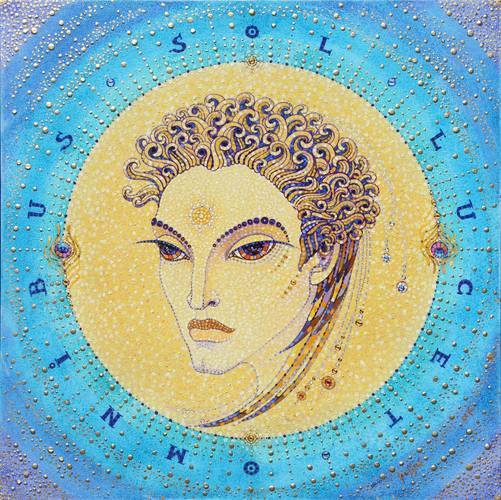
SOLE, Polina Ogiy
Sol lucet omnimus.lat. The sun shines all sun. ---- the main deity In many ancient cultures the Sun was considered to be either God himself, or visible in his image / manifestation. The cult of the Sun existed among all peoples, transformed from nomadic pastoralism to agriculture; it gave rise to Hinduism and Islam, sabeism (the cult of the heavenly bodies), the esoteric teachings of Zoroaster, to Sufism, pantheism, the worship of Baal, Helios, Saba (the Almighty), Zeus, Apollo, Jupiter, Amun, Horus, Osiris, Harpocrates, tuma, Memnon, Kronos, Anton, SHAMMASH, Galactica, Phoebe, Bela (which means: High, Chief, King, Lord, Master), Ashur, Anuria, Adod, Jehovah, Mithra, Wiracocha etc. The sun was considered: — one of the incarnations of the triple God: God the father and Creator, symbols of which served as sun — the one God, whose symbols are: the light itself, a halo, a rotating figurines, tonzura, the sun crosses the disk (with wings, or the rays of the eye) and its derivatives — socket, chrysanthemum, Lotus, ribbon star, ball. The symbol of the gods, powerful heroes: Vishnu, Buddha, Christ (the 12 rays represent the apostles) and numerous kings of the Sun — though quite rarely — sometimes embodied in female characters: in South Arabia, the goddess of Elat, and in Japan — Amaterasu, whose distant descendant is the Emperor, and the goddess is considered the Supreme creature of Japanese space. The goal of the solar festivals, the rites performed by the Egyptians, Jews, Phoenicians and other peoples of the East during the equinoxes, solstices and eclipses to help the Sun-God in these difficult periods of its annual cycle. Leaning on a stick, people continuously walking in a circle during the whole time of the Eclipse, hoping thus to help the weak Sun." At its Zenith, the point located right above the temple, which is determined by the time of the beginning of the rainy season, the Sun can see the entire Universe. The light radiated by the Sun is the cosmic mind; it symbolizes intelligence and knowledge sought by all candidates for initiation. The rays of the Sun have on the earth, the heavenly impact. Sunbeam, kindling the hearth symbolizes the transfer of the divine energy of matter in the world; it is the pivot on which revolve the heavenly and the earthly wheels. Like a rainbow, this beam — bridge by which God descends to man and man ascends to God. Observations of the solar cycle (alternation of the solstices and equinoxes) gave rise to celebrations of fertility, extant. The celebration of the birth of the Sun on December 25, the day when it begins to rise higher in the sky, became a Christian holiday after all, Christ can be called a new spiritual Sun; preserved cleaning branch, which is used in ritual self-flagellation and exile spirits in the day of the vernal equinox, dedicated to the revival and then the rapture of the Sun-God; on the day of summer solstice also kindle everywhere the fires (the fires of St John). The sun sometimes appears and, in its destructive aspect — the scorching heat that leads to drought, the consequences of which is opposite to the fertilizing action of rain. This associates the Sun with death: in all religions there are ideas about the sun of the Dead, dark Sun, and the gods of the Sun with a black face (Osiris, Hades). day star, of course, occupies among all the heavenly bodies the first place. Many religions connect the concept of God with the Sun in the sky; the Sun God is the environment of many names, the name of the destroyer of darkness (Babylonian: "who illuminates the darkness, enlightens the sky, down there, like upstairs, is destroying evil... All the princes radutsya, looking at you, all the gods Express my admiration to you..."). In a social system based on the dominance of masculinity, the Sun is mostly masculine, as it corresponds to a naive understanding of the deity (the exception is unless the Japanese Sun goddess Amaterasu-Omikami, which, however, is itself God's creation of heaven Izanagi). In areas where there was a threat of drought, the Sun with its heat could take an ambivalent or even negative value, or was supposed by the blood sacrificed in the labyrinth of people to strengthen its work in the sky. in order, therefore, to infuse into all new vitality (Ancient Mexico).There is a traditional distinction between the visible and invisible, accessible sense. and understanding, the outer and inner Sun. In most traditions the Sun is the universal Father and the Moon Mother, with the exception of the symbolic systems of American Indians, the Maori, the Teutons, the peoples of Oceania and Japan, where the Moon is masculine and the Sun feminine. Sun and rain — the most important of the fertile forces, hence the groom is associated with the Sun, and the bride the lunar goddess, and Mother Earth. Continuously going and going, sending out rays, which can be life-giving, destructive, the Sun symbolizes life, death and renewal of life through death. Spring Sun — sol invictus. White sun of the animals associated with the sun, but Black Sun is associated with a serpent and chthonic forces. In hunting civilizations the Sun is a Great Hunter. The sun is sometimes depicted as the fruit on the Tree of Life. When the solar deity is male, the Sun is depicted as the right eye. If half of the female deity, the Sun depicted as a left eye. "Children of the Sun" is a Regal, embodied gods. Cm.t.well. disk. In most cultures, the main symbol of the creative energy. The sun is often seen as being itself the Supreme deity or as the incarnation of his all-pervading power. Despite the geocentric view of the universe, which dominated ancient astronomy, some of the earliest images of the universe showed the sun as a symbolic centre or heart of the Cosmos. The most complex cult of the Sun existed in Peru, Mexico and Egypt. In some cultures, existed from some of the divine personifications of the sun... on the other hand, the sun has often been presented as the son of the Supreme God, sometimes symbolized his view or his shining love. Core values: the creative power of the Sun is the attribute of all solar gods and the Archangel Michael. the centre, the heart, the center of intuitive knowledge, strength, feelings and faith, the ability to feel and the power of imagination. The symbol of the highest cosmic forces. The all-seeing divinity and its power of teofania, motionless creature, the heart of the cosmos, the center of being and intuitive knowledge "mind world" (Macrobius), enlightenment, the world's eyes and the eyes of the day, Invictus, glory, greatness, justice, royalty. As the heat source, the sun represents vitality, passion, courage and eternal youth. As the light source, it symbolizes knowledge, intelligence. As the most striking of all celestial bodies, the sun, the emblem of royalty and Imperial splendor. In most traditions the sun is the sign of masculinity, in Germany, Japan, the Celtic regions of Africa, the Indians of North America, in Oceania and New Zealand, the Sun is feminine. The solar disk flowing from him streams of water represents the combination of Sun and water, heat and vapors, necessary for any life. Surrounded by the rays of the Sun surrounded by rays of the heart are of the same symbolism of the center as the seat of light and reason. The sun in the fight with the snake symbolizes the struggle of light and darkness, heavenly and chthonic forces. The sun standing still is beyond time. It is the Eternal Now, lighting, escape from time and the cycle of samsara. The sun and Moon together symbolize male and female, in their unity. Basic symbols: Graphic symbols of the Sun, along with the known circle, surrounded by rays, is traditionally mostly a sign of a circle with a dot in the center. In iconography the sun is portrayed a number of characters and symbols: a gold disk, a disk with rays and wings (often found in the middle East), paludism with rays (Nihon — "rising sun" — Japanese Imperial emblem), a circle with a dot in the center (a symbol of self-knowledge in astrology), star, spiral, ring, wheel, swastika (a cross or other signs that convey the rotation), heart, rosette, Lotus, sunflower, chrysanthemum. The sun can also symbolize the bronze, gold, YEL th or red, diamond, ruby, Topaz, winged or feathered serpent, an eagle or an eagle with a serpent, Falcon, Phoenix, Swan, lion, RAM, cock or bull. Often the cart in which rides the sun, pull gold or the white horse, and sometimes swans. The Sun symbols are the revolving wheel; disc; circle with a center point; a circle surrounded by rays; the swastika; the rays, both straight and wavy, symbolizing the light and heat of the Sun; shining chariot with sun gods that control white or Golden horses, or crossing the world in solar boats; the face surrounded by rays; eye; bronze Man; the spider in the center of my web with emanating from it in all directions rays; solar birds and animals such as eagle, hawk, Swan, Phoenix, cock, lion, RAM, white or Golden horse, winged or crested serpent, the Chinese dragon. fossilized sunlight (obelisks, menhirs), the rod, the scepter, the phallus, arrows, hand; God-the last ear, the guardian portrayed in the eyes of an eagle and hands; and God the judge, or the limit of the spirit— in the form of a disk, a shield and arms; symbols of the sun as the one God: the light itself, a halo, a rotating figurines, tonzura, the sun crosses the disk (with wings, or the rays of the eye) and its derivatives — socket, chrysanthemum, Lotus, ribbon star, ball. depicted as a disk with rays, circles with a dot in the center, countless variations on the theme of the disc and the circle with rays, in the form of a chariot, drawn by four white or Golden horses (#of horses varies). The cycle of the Sun and symbolize the rotating figures: this is the origin of the solar cross (the swastika), four extremity of which end in paws or legs bent in the same direction. It can be depicted animals or arms, radiating from a common axis, which in Ancient Egypt symbolized the omnipresent crackle in the movement of worlds, and testified to the desire of the Egyptians to harmony with the cosmos.Africa prehistoric rock pictures in Asian regions can often find the human figure with the "sun wheel" instead of a head, surrounded by teeth, separated by a cross, and private sectors are comprised of points (indicating the calendar division of the year?). In the prehistoric rock art of Northern Africa, there are paintings with bulls and rams, similar to the Egyptian cult images of them on the head with the disk, and they are called "solar sheep" and "oxen the sun". Some tribes in Africa the Sun is associated with the feminine, Mother. Bushmen of this Supreme deity. The ancient East Sumerian-Semitic sun gods Shamash and Ashur depicted as a winged solar disk. Egypt Cult of the Sun of the Egyptian God Amun-RA was transformed by the Pharaoh Amenhotep IV (Akhenaten, 1365-1348 BC) in a monotheistic system ("So beautiful you Shine, Sun, bright on the surface of the sky, full of living life, marked the first beginning of life itself..."). In the sun symbolism reveals the versatility and complexity of Egyptian thought. Between the appearance of the symbol (sun) and native characters (gods of the Sun), there are numerous connections (intersections). The name of the luminaries sounds like RA. The so-called personifying its God. Along with him there is another solar deity. Horakhty — God of the morning sun, and Khepri in the form of a winged beetle. Atum and the gods with rams ' heads (for example, khnum) are considered the hosts of the evening sun. Three major fluorescent image of the sun is a beetle in the morning, at noon, the solar disk (that is, RA himself), the evening — sheep. In late era the sun has provided a separate image for each hour: in the first and second child; in the seventh hour of the monkey, struck by an arrow (a ray of the sun); in the eleventh and twelfth hour — old leaning on a stick. The picture in the tomb of Ramses IX points to first watch for the crocodile, it is based on the idea that the God of the morning Sun emerges from the celestial ocean in the shape of a crocodile. Solar animals are the Falcon, the lion and the vulture. The image of the rising sun is often associated with cow's horns (the celestial cow), two sycamore, bow life, or with the post jed. Carpi — God-scarab rising sun, Mountains — day, RA — the sun at the Zenith and Osiris — God of the setting sun. Egyptian myth describes the nightly journey of the Sun on a bark through the perils of the underworld and each morning his appearance from the snake's mouth. The Egyptians worshipped the Sun in the image of the one God Amon-RA, the First that does not have the second speaker in three forms: Kheper in the morning, RA in the afternoon and tum in the evening. This Sun is the Creator possessed three virtues, symbolically expressed by three marks: the cross in the form of the letter T, crowned with a loop), Strength (the scepter of gods and kings) and Vitality (four pillars of the heavens and the solar beam). The setting Sun is sometimes depicted in the form of eggs (because when it touches the horizon it takes this form) passing through the underworld to emerge again, this time with a broken shell, the next morning; it was called the flame born of a flame. Winged Sun disk — symbol of the solar power of RA, Aten and renewal. Among the Egyptians the Sun rising is the Mountains, the Sun — RA, and the setting Sun — Osiris. His right eye is the Sun and the left the Moon. Mountains, fighting with Seth in the guise of the serpent Apophis, is the power of the Sun fighting against the darkness. Antiquity about Apollo and Helios as gods-the sun, see APOLLO. In Ancient Greece, the sun was represented by Helios, while the Roman Sol from time to time was replaced by Apollo, representing the radiance of the sunlight. According to Orphic teachings, the Sun is located in the center of the Universe, maintains the relationship and harmony between the planets, rotating them around by the force of gravity, and the streams of sunlight energising the entire cosmos. In prayers this light is called a chain connecting all things, attractive and beginning redemptive, liberating and inspiring force fertilized them. In Ancient Greece the sun was regarded as the eye of Zeus. From Plato the Sun — "the author of all things visible.., generation, nutrition and growth." The warmth and light of the Sun — creation and wisdom. The Pythagoreans ten suns — cyclic improvement. Among the Greeks the Sun the eye of Zeus. Apollo in the guise of the Sun kills the Python of darkness. The orphics the Sun — "Father", "the Great Creator and feeder of all things, the ruler of the world." The sun, the heart, and the Moon the liver of the universe. The Northern tradition of the Celts — feminine. Norse legend of the death of the handsome young God of light Balder, but both of these legends are based on the symbolic theme of a solar Eclipse, his disappearance during the night or seasonal increase and decrease the force of its light. In Scandinavia the sun is considered the eye of Odin. The peoples of Scandinavia — the eye of Odin (Boda), vision. The sun is depicted as a serpent sun. The Teutons: the Sun — woman and a Mother, and the Moon Is the Father.Slavs Slavs the sun God is portrayed in the guise of beautiful young man and, at times, like a new born every day and dying every day the same; in the symbolism of the Slavs the Sun and the Moon can change floors. China It was the Emperor's emblem in China, the sign of "Yan" in the Taoist philosophical system, but was never considered the Supreme deity in the Chinese Pantheon. Like many other peoples, the Chinese symbolically expressed the destructive aspects of solar power in the myth, like so many suns warmed the earth to a hot state: des Yat sun refused to carry their celestial watches at a time and came out to Shine at the same time; God-Archer was forced to kill nine of them to restore the cosmic balance. Typical solar emblem in China — red disk with a three-legged crow that symbolizes the three phases of the solar position during tion of the day: sunrise, Zenith and sunset. The Chinese have the Yang, the "great male principle", the Sky, the eye of day, active power, quickening ground. The sun is one of the twelve symbols of power. Ten Suns on the tree symbolize the end of the cycle. The rooster and the three-legged red crow living in the Sun: three legs symbolize the rising, midday and setting sun. Japan Japanese myth offers some farcical interpretation of this theme: the sun goddess Amaterasu hid in a cave, and it took cunning to lure her out. In Japan, people walked around the Sacred mount Fuji and Osaka, a hundred and walked through the sacred fence, in a singsong voice repeating the prayer. The Japanese Sun — goddess of women and snakes Amaterasu; she who possesses the great sun", born from the left eye of Izanagi, and from whom, it is believed, is Mikado — the Sun rising. The Symbol Of Japan. Mesoamerica According to the mystical views, the devil (Maya), sun's rays spread material and spiritual light, enlightening the world and the human mind, and endow objects with magical powers, vanishing with the sunset. At its Zenith, the point located right above the temple, which is determined by the time of the beginning of the rainy season, the Sun can see the entire Universe. The ancient Mexicans and Maya called this point the eye of the Sun depicted as a double circle on the ground eyes on the figures of the rain God Tlaloc. For the American Indian movement of the Sun through its daily and annual path is a symbol of the human life cycle. This light takes human form to raise the horizons of man to the divine level; it is a model of a real person. The sun represents the law of perpetual renewal. Every 52 years, at the time of coincidence of dates in lakeside solar calendars, the Maya and the Aztecs, believing that the life lights can fade away, and wanting to avoid the end of the world, held special ceremonies in order to appease the gods: it was called the feast of the new fire, in which human sacrifices were offered. The Supreme God of the Inca Viracocha, the Creator and inspirer of all things, the Spirit, whose power is manifested in the Sun, and the earthly embodiment of the king is the Son of the Sun. The mummies of deceased rulers were transferred to market square in Cuzco and worshipped them as jealously as the images of the gods. In the lush temple Cusco anthropomorphic image of Viracocha, turned to face the East, was surrounded by many sparkling rays. Four suns the Aztecs called the four ages of human existence that preceded the fifth (the one we live in). These epochs are connected with the four natural elements, the cardinal points and the deities. First the Sun, NAUI-Ocelotl (four-Jaguar), associated with the Earth, the North and the God Stole symbolizes the night movement of the Sun. Second, NAUI-Ehecatl (four-Wind), associated with Air, West and the God Quetzalcoatl, depicted as a monkey with puffed-out cheeks, is the setting Sun. Third, NAUI-Quiahuitl (four-Rain, or the Sun of Fire-Rain), associated with Fire, South, God, Tlaloc, gave way — NAUI-ATL (four-Water), corresponding to the East, the goddess of water Chalchiuhtlicue, and then the fifth Sun, NAUI-Ollenu (four-Movement), dedicated to Tonatiuh is the Sun will die in the earthquake. A symbol of the Sun located at the Zenith is God Whirlpooli. The Aztecs believed that to give the Sun the energy necessary for movement and, more importantly, the daily rebirth, the light should be fed. Hence the custom of ritual sacrifice — in fact, to saturate the Sun can only be human blood (precious water). Ancient Incas emphasized that we are "children of the Sun"; the Peruvian Sun-God was depicted in human form with a disc-shaped Golden face. In the Aztec cult of the Fifth Sun, the God of war Huitzilopochtli demanded new victims to sustain the sun, the protector of the human race. ... both of these legends are based on the symbolic theme of a solar Eclipse, his disappearance during the night or seasonal increase and decrease the force of its light. The Aztecs: pure spirit, air, Quetzalcoatl; the eagle symbolizes the rising Sun and the beginning of heaven, and the tiger or falling eagle — the setting Sun and earth's beginning. Crested serpent — a sun symbol. The Aztecs and the Incas were the "children of the Sun". The Incas depicted the sun in human form with the face in the form of emitting rays of the Golden disk, and was the "ancestor". North America the Sun is revered as the light of the Buddha of the Buddhists, the Great spirit of the Indians of North America, of God the Father in Christianity. American Indians the Sun — the universal spirit, the heart of the Sky. In some tribes the Sun is feminine, the Mother, in others the Sun and Moon are considered man and wife or brother and sister. Dance of the Sun(see) is one of the most important rituals. South America's most Important cultural region in which the Sun was worshipped, is, without doubt, Ancient Peru, where the Sun was viewed as the ancestor and patron of the people of the Incas. Inca Garcilaso de La VEGA (1539-1616) describes the sun temple of the capital Cusco: "All four walls from top to bottom was covered with Golden plates and bars. In front of that above the main altar, stood the figure of the Sun, consisting of a Golden plate, which was twice as thick compared to the slabs which covered the walls. Figure with her round face and her fiery rays and flames were made from a solid piece exactly as it was depicted by artists. It was so big it covered the entire front of the Church from one wall to the other... On both sides of the image of the Sun was located his sons dead bodies of kings, unknown to anyone embalmed in such a way that they looked like alive. They sat on their set at the gold beam, gold chairs, on which they used to be... side the Gates of the temple were made in the form of gold-covered portals. The walls of the temple with the external hand held rods are made of gold, and more than a cubit thick planks that covered the building like a crown." The identification of the Sun with gold in the Andes of South America was carried out with such consistency, as obviously no other place and symbolic the perfect connection of the immutability of the "noble metal" with the mummification also evident, as in drevnepersidskih temples of the moon, where the female ancestors of the head of family was clothed in silver and venerated.Australia and Oceania Celestial phenomena do not occupy in Australian mythology, such a large place in developed mythologies. A few tales of celestial bodies are included in the circle of totemic myths. The moon (month) is represented by a man, originally belonged to a totem the possum. With a stone knife a month rises to the sky, wandering to the West,/that descends the tree to the ground. After eating possums, month increases in size (full moon), weary, takes the form of a grey kangaroo; in this view it kills men, but one of them keeps a kangaroo bone, which grows back a month (the new moon). The sun is represented by the girl, rose through the tree to the sky, the Pleiades — the girls of the Bandicoot totem, which became the witnesses of the ceremony of initiation of young men and for this reason turned into stones and then into the stars. (from the article Australian mythology) This antropologicheskii and at the same time the totemic myth is woven with a cosmogonical myth: in the beginning there was darkness and the constant night pressed on the ground like an impenetrable veil, and then the sun came out and dispersed the darkness of Valencia (totem centre Bandicoot). (from the article Australian mythology) myths of the Northern and South-Eastern tribes of Australia along with the totemic ancestors there are also more generalized and apparently developed later, the images of "datateknik" of mythical heroes. In the North of the famous old mother (appears under the names Kunapipi, Clearin-Cleary, Cagliari etc D.) is the matriarchal ancestor, symbolizing giving birth to fertile land and associated with it (and with fertility, reproduction) the image of the serpent of the rainbow. In the Southeast — universal Patriarchal father (Nurrundere, Kony, Viral, Norelli, Bunjil, Byam, Daramulun), who lives in the sky and acting as a culture hero and patron initiation rites. Mother and father may belong to different, sometimes to several totems (each part of their body can have its own totem), respectively, to be the common ancestors (i.e. media and original sources shower) to different groups of people, animals, plants. In myths usually involve not one but several "mothers" and sometimes the two sisters or mother and daughter. These stories and their corresponding ritual contact with one of the "halves" (phratries) the tribe that permits the assumption of a partial Genesis of the images of the mothers of ideas about matriliny prostitelno. Lengarov living in Arnhemland, mythical ancestors are sisters Guncheva, coming from the North on their own created sea. In the boat they bring the various totems that hung drying on the trees. Then the totems are placed in work bags and in my travels hiding in various places. From totems appear ten children, first deprived of sex. Then hidden in the grass become men, and hidden in the sand. They are doing to their descendants a stick-diggers, belts made of feathers and other decorations, introduce the use of fire to create the sun, taught to consume certain types of food, give them a weapon, magical, totemic dances are taught and administered the rite of passage of young men. Guardians of ritual secrets, according to this myth, are the first women, but men Rob them of their totems and secrets distilled and female singing. The progenitor continue, forming terrain, new feeding areas and tribal groups of people. Again reaching the sea in the West, they go to the Islands, which before arose from lice dropped ancestress from their phone long after the disappearance Junchow in the West there are two other sisters, born in the shadow of the sunset. They complete the work of their predecessors, establish marriage classes and administered the ritual of the great mother — Kunapipi (Kunapipi), which partially are staged in our theatre of their actions. Sisters settle in a certain place, build a hut, gather food. One of them gives birth to a child. The sisters try to cook yams, snails and other food, but plants and animals come to life and jump out of the fire, the rain begins. The sisters try dancing to ward off the rain and terrible serpent-the rainbow that comes close to him and swallows the first totem animals and plants ("food" sisters, and then two women and a child. Being in the belly of the snake sisters are hurting him. The snake spits sisters. The child comes to life from the bite of ants. Sister Sauvaluck (as they are called Glengary and some other tribes) represent a peculiar variant of the same mothers as female, embodying fertility. As the snake-rainbow is widely known in most parts of Australia, combined ideas about the water spirit, serpent-monster (the germ of the "dragon"), magic crystal (it reflects a rainbow spectrum), used by sorcerers. Ingestion, and no such serpent people is (and other peoples) with the rite of initiation (symbols temporary death update). R. M. Berndt finds swallowing serpent sisters erotic symbolism associated with fertility magic. Maori Sun and Moon — the eye of Heaven. The peoples of Oceania, most often the Sun is the Mother of all, Luna's Father, and the star — children; in some parts of Oceania, the Sun and the Moon are considered children of the first men and women. The sun — "the great eyeball". Iran In Iran, the sun was regarded as the eye of Ahura Mazda (sometimes called Orascom. Maristov Mitra — the sun God. Saul, his Quadriga and Cauto are usually depicted on the right, and the Moon and Autopath to the left of the miter. The Iranians of the Sun — eye of Ormuzd. "Whoever venerates the Sun that is immortal, ruled by fast horses... honor Ormuzd, honors the Archangels, honors his own soul." The winged disk of the Sun is also a symbol of Ormuzd (Ahura Mazda). Hinduism In India these rays are compared to arrows or hair of Shiva, and the Sun is beginning and end of all phenomena. In India the personification of the rising Sun are beautiful and young goddess USAS, which dispels darkness and shines in the garb of light, and God of dawn Aruna. Two images of the Sun, passive and active, present Surya (its symbols — the bird, the horse, the wheel or the chariot of a light which dispels darkness, sickness and evil Powers, ceases to rain; and Savitar, the divine power that tells impetus to the movement of the whole nature. eyes of Varuna. Indra — the sun God defeats the dragon of chaos and darkness, Vritra. Siva — the Sun whose rays are the creative Shakti, giving life to the world. The sun is the "world door", the entrance to knowledge and immortality. Triple tree with three suns symbolize the Trimurti. The tree with the twelve Adityas of the sun means that the signs of the Zodiac and months of the year. These twelve forms of the sun will appear simultaneously as one at the end of the cycle of manifestation. Buddhism revered the Sun as light. In Buddhism, the Sun is the light of the Buddha. Taoism the Taoists, the Sun is Yang and the great heavenly power; The sun and Moon together symbolize supernatural being, all shining. Bible / old Testament the Heat of the Sun warming the human body, and the light that it emits has turned the Bible into symbols of the Divine spirit, flammable heart and open mind. In Genesis the Sun symbolizes the revelation and teaching. Stopping the Sun means the appearance of God, and the setting — the absence of the Divine spirit: And in that day, saith the Lord God: I will make the sun go down at noon and darken the earth in broad daylight (Amos, VIII, 9). —• Lies exhausted has given birth to seven, emits his breath; another day the sun has set on her, she is ashamed and confounded (jer. XV, 9)* In the Bible the symbolism of the Sun sometimes has a negative value the all-consuming passion, rage, selfishness (job praising yourself for not worshiped the Sun and the moon, that is, not believing in your own wisdom).Judaism the Jews: the divine will and guidance. Only in the old Testament of the Bible — in contrast to the cult of the Sun "Gentiles" — the Sun is seen only as one of the two "luminaries" that God has ordained place in the firmament. Gnosticism the Gnostics believed that the Sun... the dual— Sun white Sun and black, Michael and Samuel... that is an astronomical and cosmic symbol of two opposing types of light and two serpents representing good and evil, good and evil, God and Satan. These views they had embodied in the intertwined good and evil rays of the Sun. Christianity Theologians consider it the Holy substance of force and visible image of her spiritual existence. In the Christian imaginative world upside all over again in the East the Sun is the symbol of immortality and resurrection, and Christ on the mosaic of the 4th century is identified with Helios in the radiant halo of the sun chariot or acts as the judge of the world, surrounded by a halo solncevosam. Since Christ is also the Lord of time, he is associated with the establishment of the duration of the day by the Sun, which is especially often seen in Romanesque art. The Christians the Sun is God the Father, ruler and guardian of the universe, radiating light and love, Christ, the Sun of righteousness, the Logos, the divine principle in man. The sun and Moon depicted together with the crucifixion signify the dual nature of Christ and the power of nature, the worshipper of the Lord of the Universe. The sun is the seat of the Archangel Michael and the Moon — Gabriel. Thomas Aquinas is portrayed with the Sun on his chest. Christ is the "Sun of righteousness" — took the place of the popular in the late Roman Empire of the God Mithras, the symbol of the rebirth of the Invincible Sun. The sun, moon and stars were created on the fourth day of CREATION. Joseph (1), the son of Jacob, had a dream that they worship him. The sun and the moon are depicted in the scene of the crucifixion of CHRIST (II). Wife of the Apocalypse, "clothed with the sun," see the VIRGIN MARY (4). The sun is a symbolic expression of Christ. This interpretation goes back to the prophecy of Malachi 4:2 where it says, "But unto you that fear before My name shall the Sun of righteousness with healing in His wings..." the Sun and the moon are represented as attributes of the virgin Mary, for in revelation 12:1 says: "...a woman clothed with the sun; under legs its moon." The sun and the moon are often present in scenes of the crucifixion: here they are expression of grief is only created on the death of Christ. SV. Thomas Acqui-nskogo sometimes depicted with the sun on his chest. In Ancient Greece the sun was regarded as the eye of Zeus, in Scandinavia — Odin, Iran — Ahura Mazda (sometimes called Orascom), India — Varuna, Muhammad called him the eye of Allah. The sun is revered as the light of the Buddha of the Buddhists, the Great spirit of the Indians of North America, of God the Father in Christianity. The sun is revered as the light of God the Father. "This is a visible image of the divine Grace... the transcendent archetype of Light" (Dionysius). "There is nothing available eyes around the world that would more adequately serve as a symbol of God than the Sun, which sheds light visible life, first itself and then all celestial and earthly bodies" (Dante). Islam Muhammad called it the eye of Allah. Muslims is all-seeing, all-knowing Eyes of Allah. "This Sun is the reflection of the Sun that is hidden by the veil" (Rumi). The heart of the Universe and the sign of God in Heaven and Earth." Astronomy/logy In astrology the Sun, as in antiquity, was regarded as one of the moving "planets" visible in the treatment of which around the Earth determines the length of the year. Like the moon, the Sun was considered the "main light" with properties: "masculine, hot, dominant". The position of the Sun in the zodiac (see the Stars) was determined what "sign" was born. The sun was in the constellation Leo your "day home" and, rising, reached Aries, and declining, was in the constellation Aquarius. In astrology the Sun is the life, the vitality, the embodied nature of identity, the heart and its aspirations. The heart of the world, the center of the controlled system, the Sun is in the middle of the circle of the zodiac and plays a pivotal role in the sliding of the individual's horoscope. Astrologers believe that its properties are warm, dry, masculine and positive start. Alchemy In alchemy the Sun meets the sparkling gold ("the Sun of the earth, the king of metals"), it is astrologically associated with the constellation Leo. "Black sun" — the alchemical symbol of raw, primary state of matter. The alchemists is the mind. Sol et Luna is a gold and silver, king and Queen, soul and body, etc. Sol niger est prima materia. The planetary sign of the Sun, a circle with a center point — a symbol of the completion of the "great Work". Magic as sunlight was valued oranzhevo-yellow, and of the precious stones associated with the Sun was considered diamond, ruby, Topaz, peridot and hyacinth. According to the traditional symbolism of the Sun was responsible for the Royal and paternal authority, for a person's position in the world, for glory and victory, for the heart and willpower and vitality. Its colour is Golden, metal — gold, day — Sunday, the position in the sky, the Zenith, the age and the beginning of manhood, the flower — chicory or spurge-solntsepad. Freemasonry Sun and Moon, the two luminaries of the physical world, Masonic symbolism — images of the first and second mentor and supervisor, they indicate that "every true free-Mason and a brother both by day and by night must seek the light of truth and never fall into the darkness of sin and impurity" (Bayrepel, 1793). A Mason can attain the highest Knowledge only through a symbolic trip around the world, which he makes in the dedication (see Labyrinth). It follows the path of the Sun from East to West, defining the change of seasons that correspond to the stages a dangerous path candidate. These stages — birth in the darkness of winter, overcoming the menacing clouds in the spring, climbing to the Zenith in the summer to grow corn, and fruit, defeating the surrounding enemies, autumn fog, set before the onset of winter and death, allegorically represented by the West, where the candidate reveals the secret of the updates existence. Blazing star Masonic Lodge is a symbol not only of divine power, but also the Sun in all his innumerable mercies. Heraldry the Sun was the emblem of Louis XIV, king of France. On the arms of the Sun depicted as a person, or disk surrounded by straight or intermittent (blinking) rays. Emblems of the Sun emitting its rays from behind the clouds. //My Shine is impossible to hide. Dignity and grandeur are associated with good deeds for a while can be dimmed. But to completely hide them as impossible, like the sun. [SE-II,tab.56-11,p. 342] the Sun setting in the sea. //The sun is still beautiful, though ready to leave the sky. the symbol shows us that good and godly man, as if he were upset, and in some depressed mood or humiliated he was under the influence of adverse circumstances or prevratnosti fate, however, it is worthy of admiration and praise, and in due time it will rise again and will succeed in honors and glory. [SE-II,tab.36-15,p. 258] a Solar Eclipse. //Now about me think more and better notice. the symbol means that trials and tribulations lead us to thoughts about God and our destinies, while at other times we tend to ignore it. Proverb. The sun pay attention only when it is his Eclipse. In other words — failure incline our eyes and mouth to the horn world. [SE-II,tab.22-13,p. 197] the Sun over a tree with dense foliage. //Winter has passed. the symbol means the return of summer, or period of prosperity, followed a period of disaster and bezotechestvo. [SE-II,tab.40-6,p. 276]The sun//It shines not only for myself but for the whole Universe. symbolicconstant. [Emblemata-2; tab.4-7, p. 122] Sun, pouring its rays on the dial of a sundial. //In darkness we are not wanted. the symbol demonstrates that as long as our actions are not illuminated by the sun of righteousness, they will not bring g any good neither to us nor to others. [SE-II,tab.43-1,p. 289] the Sun shining in full strength. //It is only one. the character Creator in which the more sparkle, energy and utility, than any other creature. A beautiful emblem of the causes of all things. She is so beautiful That lost the peoples fall down, Taking a copy for the original. [SE-II,tab.52-11,p. 327] the Midday sun over the calm sea.//It is impossible for me to dry up. the symbol for the true blessing it is possible to attack, but impossible to win. [Emblemata-2; tab.15-8, p. 166] the Sun shining in full strength. (See. Fig.12 in table. 52.) [SE-II,tab.41-1,p. 280] the Sun shining through the clouds. the symbol of the oppressed dignity and his upcoming lights at the time, when dispelled the clouds and obscurations. [Emblemata-2; tab.15-10, p. 166] Setting sun. //Not without regret. The light of heaven was nearly finished with his daily movement and, rushing to the goal, falls lower and lower. It seems that it is on the latest line that separates night from day. His balloon in sunset point are becoming more and more amazing shadows lengthened, then completely lost in the indistinguishable darkness. the symbol of those blessings which have little value until they have it, but when it comes time to part with them, suddenly begin to realize their true value, and losing hopelessly, bitterly regret their loss. [SE-II,tab.52-4,p. 326] the Sun behind the clouds. //It is hidden, but in the meantime preparing their thunder. It is a symbol of retribution, which in secret is preparing all the necessary to crush the evil, attacking them suddenly, invisible and in that moment, when you least suspect. [SE-II,tab.34-13,p. 248] the Sun shining through the clouds. //My suffering is my glory. the symbol of the Martyr, whose pain and suffering wrapped his fame. [SE-II,tab.27-9,p. 216] the Sun. //It is sowing everywhere the good. a symbol of a pious and good Christian or a blessed Savior who dedicated his life entirely to the creation of good. His life will always be a role model for those who are going the same way. [SE-II,tab.47-3,p. 306] the Sun. //It shines spreading its rays. When the sun rises, the East turns pink. Hills, located on the West side, are covered in streams of Shine and glitter. Cold Northern areas rejoice in its pleasant heat. Southern areas languishing from his fire. Similarly, the influence of the Sun of Righteousness is vague and has no defined boundaries. Previous generations have felt his influence, and generations not yet born will enjoy it in the future. The benefits provided by his death, shall apply to past, present and future era of human existence. [SE-II,tab.51-10,p. 322] the Sun. //I'm too bright to me to hold the look. a symbol of God. With versenta Almighty makes it incomprehensible It is unknown to us because too large, Chobe we were able to know him. So Leah and the sun unseen for us because of its powerful glare. [SE-II,tab.50-3,p. 317] the Sun II the moon. //I thrive, when you look at me your gaze. a symbol that while we are under the supervision and upbringing the supervision of divine Power, and she honors us with his attention and care, we will be on the rise. Until then, will continue until vzimnoy communication between us and this power, pashas fate will be good luck and success. [SE-II,tab.46-13,p. 303] the Sun in the zodiac. //I'm not a Maverick and never shy away from the na course. the symbol of a righteous and good man, who, like the sun, constantly adheres to the ways of piety and Holiness, and never deviates from this path, and shows the world brilliant examples of his infallibility. [SE-II,tab.46-14,p. 303] the Sun. //His kindness has no limits. the symbol of the deity. An inexhaustible heat source, Whose rays adorned the face of nature, a symbol of all that is good and great, Beautiful or gracious, fatherly divine Whose rays Pour out life and sows for all That is under it. [SE-II,tab.46-15,p. 303] the Occult Have sealants "Sun — divine arivial just" XIX the main Arcana of the Tarot, represented by the image of the Sun, expresses the dual function of light, bringer of light and heat: from him come the 12 rays, straight and wavy (it is connected with the zodiac, and thus with the cycle of the seasons). The midday Sun creates life, but is able to destroy, burn and dry up, if there is not enough lunar water. Flowing from his Golden rain symbolizes the richness of spirit and heart, the Philosophical stone of the alchemists, available only to the initiated. This Arkan brings the idea of the victory of the sun healthy mind in a Golden age. He reminds us that earthly happiness is available only to those who can overcome the resistance of his own life, like the Twins, who, being among themselves in free communication ." participate in the ordering of human chaos. Interpretation at guessing: brotherhood, harmony, a fair trial; newfound happiness. Honour, glory. Idealism incompatible with reality. Irritability, resentment. The sun Tarot inside the triangle is the first geometric shapes — used in heraldic art a symbol of the creative principles that is revealed to people in three persons. Art In the iconography of the Sun was depicted mostly as a solar deity with a radiant halo around the head or in the form of a luminous disk with a human face. The attribute of TRUTH personified, because in his light everything becomes clear. She holds it in her hand. Likewise, it sheds light on the love affair of Mars and Venus (8). allegorical figure of Truth in Western art is often depicted with the sun in his hands Я научусь тебя не ждать, Я научусь тебя не звать. Начну со Временем, В безвременье играть. Я вижу лик твой в небе и в себе, Я слышу голос,в беззвучной тишине. Прикосновение капель,нежности завет, И ветра ласка шепчущий ответ. Струится Солнце иль искриться дождь, Ты говоришь со мной из снов. И шелестит листва,танцуя на ветру И облака бегут с востока на Зарю. Я научусь тебя не ждать, Я научусь тебя не звать. Мой млечный путь меня ведет, В начертанном мгновении Встреча ждет. Pollin.
https://www.saatchiart.com/art/Painting-SOLE/826122/3157405/view
0 notes
Photo

The Carnac stones (Breton: Steudadoù Karnag) are an exceptionally dense collection of megalithic sites around the village of Carnac in Brittany, consisting of alignments, dolmens, tumuli and single menhirs. More than 3,000 prehistoric standing stones were hewn from local rock and erected by the pre-Celtic people of Brittany, and form the largest such collection in the world.[1] Most of the stones are within the Breton village of Carnac, but some to the east are within La Trinité-sur-Mer. The stones were erected at some stage during the Neolithic period, probably around 3300 BCE, but some may date to as early as 4500 BCE.[2] Although the stones date from 4500 BCE, modern myths were formed which resulted from 1st century AD Roman and later Christian occupations. A Christian myth associated with the stones held that they were pagan soldiers in pursuit of Pope Cornelius when he turned them to stone.[3][4][5]Brittany has its own local versions of the Arthurian cycle. Local tradition claims that the reason they stand in such perfectly straight lines is that they are a Roman legion turned to stone by Merlin.[citation needed] In recent centuries, many of the sites have been neglected, with reports of dolmensbeing used as sheep shelters, chicken sheds or even ovens.[6] Even more commonly, stones have been removed to make way for roads, or as building materials. The continuing management of the sites remains a controversial topic.[1][7] https://www.instagram.com/p/Bxw0qKdH8HX/?igshid=14fpu9pwh023h
0 notes
Text
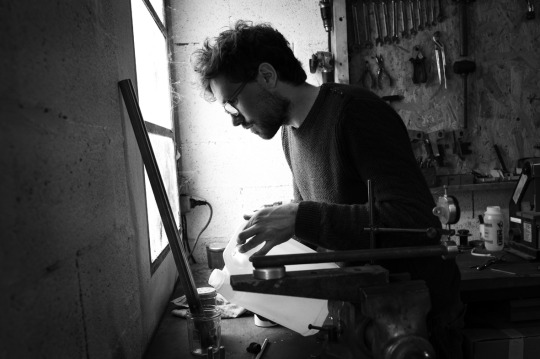
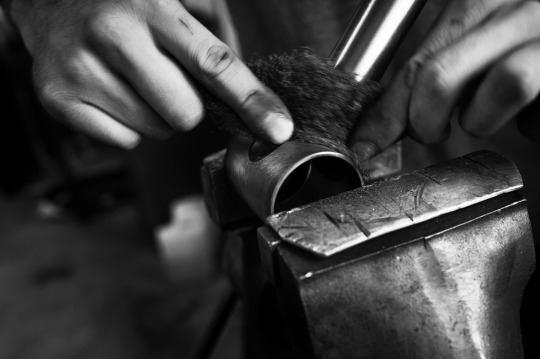
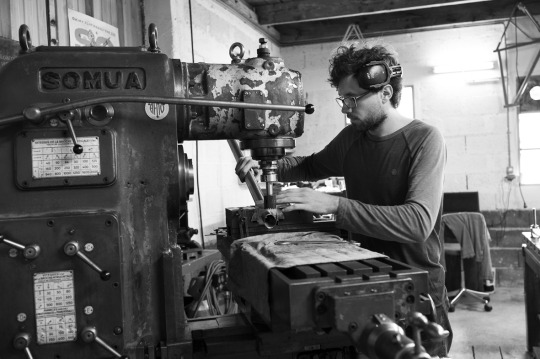

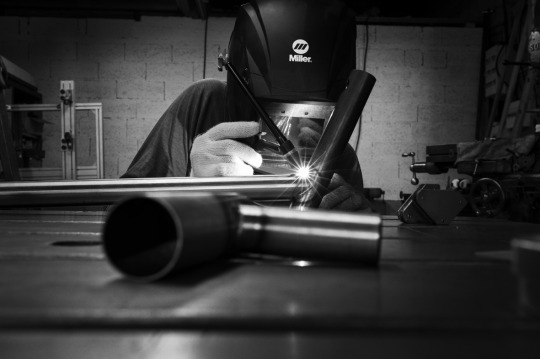
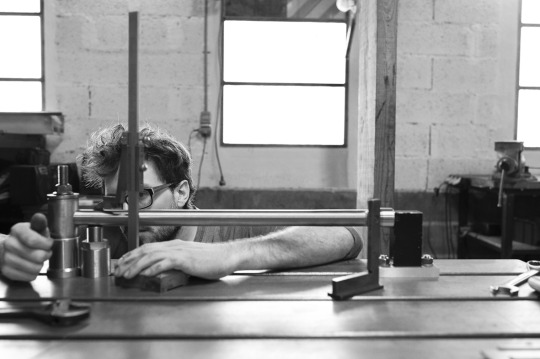
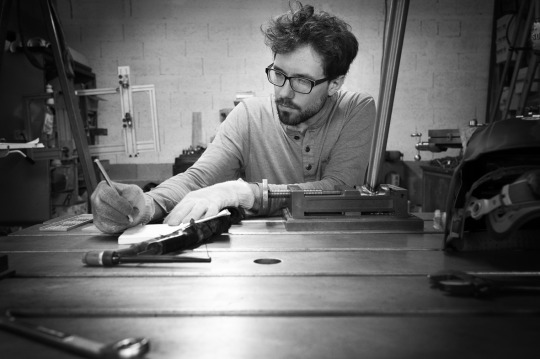
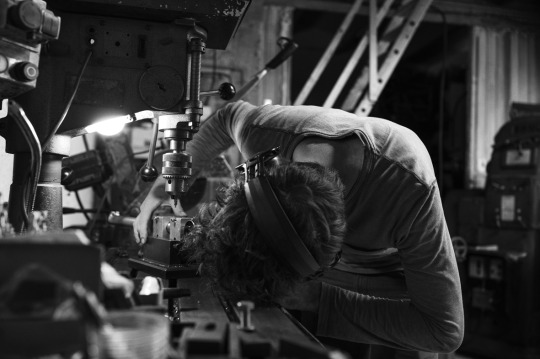

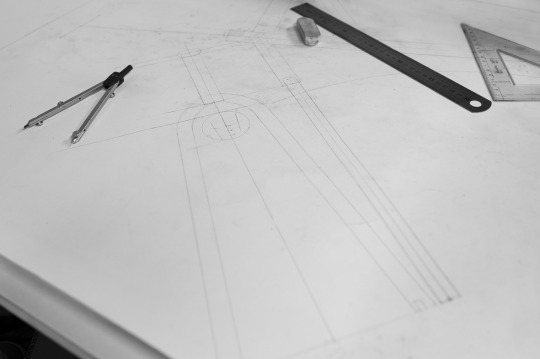
Chez Yoann Loncle / MENHIR Cycles
#menhir cycles#yoann loncle#framebuilding#framebuilders#bike#artisanat#welding#soudure#tig#soudo-brasure#fraiseuse#machine#cadreur#cadre#love tour
0 notes
Photo
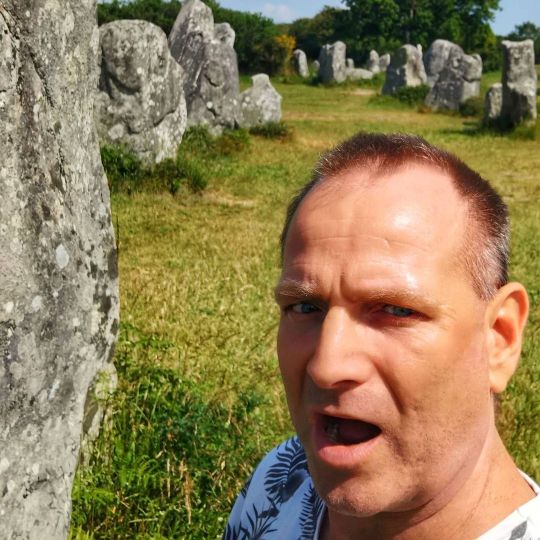
The small villages of Carnac and Kerzerho in northwestern France🇨🇵 are famous for the Carnac stones, thousands of prehistoric standing stones spread across three alignments: Ménec, Kermario and Kerlescan. They are an exceptionally dense collection of megalithic sites🏛️ consisting of stone alignments (rows), dolmens (stone tombs), tumuli (burial mounds) and single menhirs (standing stones). More than 3,000 prehistoric standing stones were hewn from local granite🧊 and erected by the pre-Celtic people of Brittany, and form the largest such collection in the world. The stones were erected at some stage during the Neolithic period, probably around 3300 BCE, but some may date to as early as 4500 BCE, which would make them close to 7.000 years old. Although the stones date from much older times, modern myths were formed which resulted from 1st century AD Roman and later Christian occupations. A Christian myth associated with the stones held that they were pagan soldiers⚔️ in pursuit of Pope Cornelius when he turned them to stone. There are some own local versions of the Arthurian cycle. Local tradition claims that the reason they stand in such perfectly straight lines is that they are a Roman legion🗡️ turned to stone by Merlin🎆. -- #Carnac #Karnak #France #Kerzerho #Menec #Kermario #Kerlesan #megalith #megalithic #menhir #granite #preceltic #bce #christian #christianmyth #pagans #paganworship #pagansites #arthurian #arthuriancycle #burialmounds #stonetombs #tumuli #prehistoric #prehistoricsites #Brittany #Bretagne #Merlin (at Alignements de Carnac) https://www.instagram.com/p/CP8OrueJGe2/?utm_medium=tumblr
#carnac#karnak#france#kerzerho#menec#kermario#kerlesan#megalith#megalithic#menhir#granite#preceltic#bce#christian#christianmyth#pagans#paganworship#pagansites#arthurian#arthuriancycle#burialmounds#stonetombs#tumuli#prehistoric#prehistoricsites#brittany#bretagne#merlin
0 notes
Text
Si vous regardez nos publications Instagram et IGTV, vous savez que nous demandons des sacs poubelles. En effet, L’Association La Maison Écologique souhaite informer sur le Zéro Déchet dans la Nature. Nous faisons un grand nettoyage et nous avons besoin de votre aide.
Le Bois Sacré
La nature sauvage nous offre la vie. Les animaux habitent dans la forêt et la diversité végétale et animal nous nourri aussi. Je pense qu’il est devenu très important de prendre soin des grands arbres parce qu’ils transforment le gaz carbonique en oxygène.
Les principaux systèmes produisant un surplus d’oxygène sont les forêts en formation, et les algues dans les mers, dans la mesure où leurs « produits » sont conservés. C’est le phytoplancton présent dans les océans qui, à lui seul, fournit la majorité du dioxygène atmosphérique à travers le cycle marin de l’oxygène.
Zéro déchet dans la nature, c’est la vie.
J’ai remarqué que l’humain n’a pas encore compris l’utilité des poubelles et encore moins du recyclage. Je publie les photos des déchets ramassés chaque jour par Papy et moi-même. Ces photos représentent seulement quelques mètres carrés sur les bords d’une route et des chemins, nous sommes très loin du zéro déchet dans la nature.
Alors au lieu de rouspéter, j’ai créé La Maison Écologique dont l’activité principale est la protection de notre environnement. Actuellement, nous ramassons les détritus pour les déposer ensuite dans les conteneurs prévus pour les poubelles et nous recyclons ce qui peut l’être.
Le Grand Nettoyage
J’ai aussi créé cette association pour sensibiliser et informer. Comme je l’écris très souvent, chacun est responsable de lui-même. Aussi, je ne culpabilise personne et d’ailleurs, je ne souhaite pas porter d’accusations contre nos dirigeants ou les collectivités publiques.
Et puis, très sincèrement, les trois communes sur lesquelles nous faisons actuellement ce grand nettoyage ne sont fréquentées que par la population locale et quelques rares touristes. Les ordures ne tombent pas des avions et encore moins des bateaux : nous sommes en région montagneuses et très loin de la mer.
Par contre, les déchets dans les rivières se dirigent inévitablement vers la mer. Question de logique.
Nous avons besoin de vous et de sacs poubelle
La Maison Écologique est une association loi 1901 auto-gérée et auto-financée. Nous ne demandons pas de subventions tout simplement parce que ce sont vos impôts et que nous vous laissons le choix de vous investir ou pas.
L’actuelle quantité de bouteilles en plastique et autres déchets polluants dépasse notre capacité en matière de sacs poubelle. Aussi, nous vous demandons de nous aider en nous fournissant ces fameux sacs très utile à ce grand nettoyage pour un zéro déchet dans la nature.
Comment participer à l’action zéro déchet dans la nature ?
Je vous donne quelques indices d’un point de vue général :
Ne jetez pas vos ordures par la fenêtre de votre voiture…
Nettoyez la nature après votre pique-nique et/ou bivouac.
Vous pouvez arrêter de fumer, sinon, un cendrier de poche évitera les mégots jetés par terre
Prenez des gourdes et n’achetez plus de bouteilles en plastique. Vous économiserez des poubelles.
Abonnez-vous à ce blog, nous donnons régulièrement des idées zéro déchet
Comment nous faire parvenir des sacs ?
Ça serait vraiment très cool de nous faire parvenir des sacs poubelle (de préférence compostables – la droguerie écologique) mais nous prenons aussi les grands sacs de croquettes des animaux.
J’ai épuisé mon stock de paquets de compléments des chevaux, ça fait des sacs poubelle parfaits si non troués et grands (merci d’éviter les croquettes en 2kg hein…)
**Par courrier à La Maison Écologique, Montée du Pavé, 07690, Vanosc.
**Vous pouvez venir sur place et déposer vos paquets dans le jardin à coté de la porte de l’atelier, à Vanosc. Entrée par la rue du tilleul, passer le portillon vert et c’est la grande porte à votre gauche. Il y a un rangement sous le menhir 🙂
**A Villevocance, je préciserai le lieu un peu plus tard.
Merci et surtout, partagez notre demande s’il vous plaît. C’est une demande sérieuse
Vous pouvez partager cet article sur Pinterest.
Zéro Déchet dans la Nature : le grand nettoyage Si vous regardez nos publications Instagram et IGTV, vous savez que nous demandons des sacs poubelles.
0 notes
Text
Sarzeau – Stage 4 Finish, TDF 2018
Will wine return to Sarzeau?
In 2017, the town of Sarzeau launched a call for applications to revive viticulture, which was once a major agricultural production of the city and the Gulf of Rhuys. The municipality purchased 10 hectares of farmland to kickstart the activity, hoping to start producing wine in five years. Wine production, flourishing until the phylloxera crisis and the prohibition of the local grape, the noah, had ceased completely in 1993. The mayor of Sarzeau, David Lappartient, intends to revive it. After all, Saint Émilion was born in nearby Vannes!
SARZEAU AND CYCLING
The Tour de France regularly visited Brittany in all its variants but has never held the finish of one of its stages in the Gulf of Morbihan. It will be the case in Sarzeau where the passion for cycling is still a little higher than elsewhere in the region, the mayor of the town being David Lappartient. The new president of the International Cycling Union was born in Pontivy, like Paul Le Drogo, winner of a stage of the 1929 Tour de France, who died in Sarzeau in 1966. After his career, and three participations in the Tour, Paul Le Drogo directed was Louison and Jean Bobet’s sports director in the Stella-Wolber-Dunlop team before taking the reins of the selection of the West on the Tour de France. His brother Ferdinand won a stage of the Tour in 1927, when he was also champion of France. Closer to us, triathlete Pierre Le Corre, who participated in the Rio Games in 2016, is also from Sarzeau. The local cycling club, Vélo Sport de Rhuys, is one of the oldest and largest clubs in Morbihan. Created in 1951, it has nearly 200 licensees and is involved in all major events related to cycling in the region (Grand Prix Plumelec, Tour de Rhuys, BMX French championships …). David Lappartient was its president until 2007.
SIGHTS
The Gulf of Morbihan
The Gulf of Morbihan gave its name to the department: Mor-Bihan means “small sea” in Breton. Extended by the Bay of Quiberon, this emblematic place of South Brittany belongs to the club “of The most beautiful bays in the world”, as well as Ha Long Bay in Vietnam and the San Francisco bay in the United States. The Gulf offers a unique spectacle where land and sea mingle in changing landscapes over some 11,500 ha. A veritable inland sea sheltered from the ocean, it is dotted with numerous islands: Arz, Gavrinis, Berder, and innumerable islets. According to a legend, there are as many islands as there are days in the year. In reality, some 40 islands can be spotted, 30 of which are inhabited. The largest of them, Ile Aux Moines (The Monks island) is known as “the pearl of the Gulf”. It is exceptional by its original shape, its flowery streets and its special atmosphere. A haven for seamen, the Gulf is also remarkable inland. From Arzon to Locmariaquer, a footpath gives access to exceptional viewpoints.
Chateau de Suscinio
The impressive fortress of Suscinio is celebrating its 800th anniversary in 2018. In turn Benedictine priory, manor, princely palace, residence of the Dukes of Brittany: behind its ramparts, the castle tells eight centuries of a turbulent history along its passageways and its walkways offering a beautiful panorama of the ocean.
On the occasion of its eighth centenary, a new and more immersive course is proposed: new scenography, hunting camp, medieval habitat, night show … The domain, listed as a Sensitive Natural Space is a protected area. To discover the exceptional richness of the flora and fauna found there, educational itineraries also exist.
Menhir of Kermaillard and megaliths
The town has many megalithic sites including the menhir of Kermaillard, near the Logeo, which presents remarkable engravings. It is visible from the route of the Net going to the roundabout between the roads to Port Navalo and Saint Gildas. This beautiful granite monolith is adorned with a well-preserved decoration on its flat surface, which was buried for a long rime. A small fitted axe, a square cartouche and a large crescent discovered on the spot point to the end of the Neolithic.
Sarzeau has joined the association of megaliths which, with Arzon or St Gildas de Rhuys and Carnac, intends to have this heritage recognized as “World Heritage” by UNESCO.
Beaches
The beaches of Sarzeau are as varied as they are pleasant. The most popular is Penvins Beach, overlooked by the Notre Dame de la Côte Chapel. It is an exceptional spot for kite surfing and a favourite area for kite enthusiasts. It also has a school for sailing, kite surfing and stand-up paddle. Suscinio Bay stretches for 3 km from Beglan Beach to Penvins Point. A coastal path overlooking the beach leads to the small chapel of Penvins. Protected from the winds thanks to the Beglan cove, the Suscinio beach offers an exceptional panorama.
Port of St Jacques
The oldest parts of the port were built around 1910. The main dike was extended in 1955 and has a small lighthouse; it was moved in 1988 during the last expansion. It has until recently hosted a small fishing fleet. This port is dominated by old villages where some old fishermen’s houses testify to the traditional habitat of Morbihan.
The port of Logeo
The Logeo is an important maritime site of the Rhuys peninsula. Before 1789, the barges of Rhuys unloaded the goods of sailboats that anchored in the bay sheltered from the westerly winds. The products loaded were mainly wine, Rhuys brandy, wood and salt. In 1896 the current large hold was built. The Ville de Vannes steamer used to land there.
WHAT TO EAT
Gochtial of Saint-Armel
The gochtial comes from the Breton name gwestall, which means cake, but it is not really one. Halfway between a big loaf of bread and brioche, it is one of the most famous specialties on the Rhuys peninsula. While gochtial can be found everywhere in the area, it is the village of Saint-Armel, 8 km of Sarzeau, which claims paternity. It is rumoured, however, that it was invented in the nineteenth century two kilometres further up, in Hezo, where the inhabitants brought cakes made at home to cook in the baker’s oven on Saint Vincent’s day, January 22. Since then, gotchal is eaten all year round, especially at “Le Moulin à Café”, the bakery of Saint-Armel jealously keeping its recipe.
See also: Cycling Sportives in the Alps/
from Jane Cycling Blog https://janecycling.wordpress.com/2018/07/08/sarzeau-stage-4-finish-tdf-2018/
from Jane Cycling Blog https://ift.tt/2uhxbUQ
0 notes





